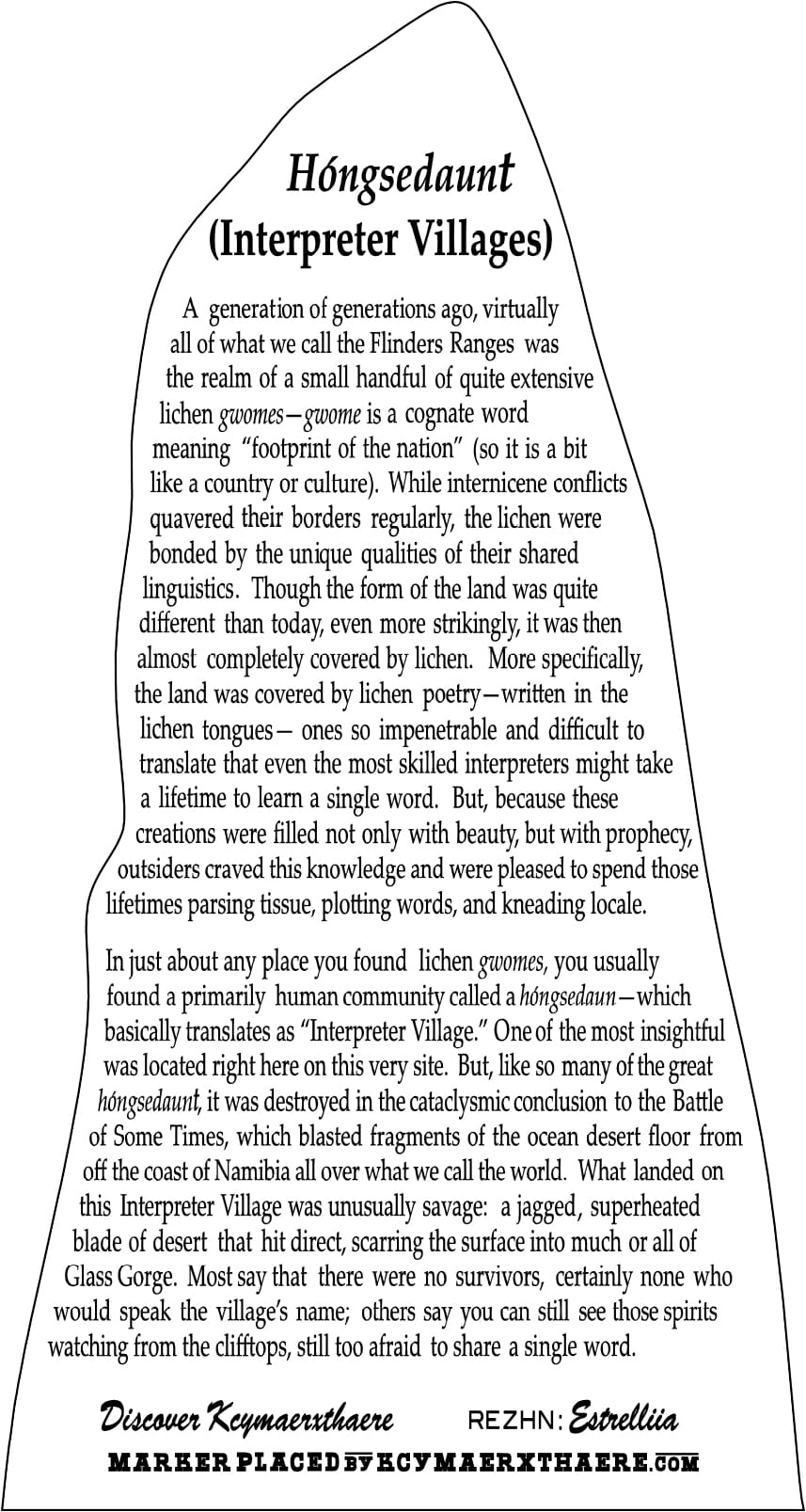Overview
Access
Public Dedication
Text of the Marker
The part of the story installed here:
Hóngsedaunt (Interpreter Villages)
A generation of generations ago, virtually all of what we call the Flinders Ranges was the realm of a small handful of quite extensive lichen gwomes—gwome is a cognate word meaning “footprint of the nation” (so it is a bit like a country or culture). While internicene conflicts quavered their borders regularly, the lichen were bonded by the unique qualities of their shared linguistics. Though the form of the land was quite different than today, even more strikingly, it was then almost completely covered by lichen. More specifically, the land was covered by lichen poetry—written in the lichen tongues—ones so impenetrable and difficult to translate that even the most skilled interpreters might take a lifetime to learn a single word. But, because these creations were filled not only with beauty, but with prophecy, outsiders craved this knowledge and were pleased to spend those lifetimes parsing tissue, plotting words, and kneading locale.
In just about any place you found lichen gwomes, you usually found a primarily human community called a hóngsedaun—which basically translates as “Interpreter Village.” One of the most insightful was located right here on this very site. But, like so many of the great hóngsedaunt, it was destroyed in the cataclysmic conclusion to the Battle of Some Times, which blasted fragments of the ocean desert floor from off the coast of Namibia all over what we call the world. What landed on this Interpreter Village was unusually savage: a jagged, superheated blade of desert that hit direct, scarring the surface into much or all of Glass Gorge. Most say that there were no survivors, certainly none who would speak the village’s name; others say you can still see those spirits watching from the clifftops, still too afraid to share a single word.








